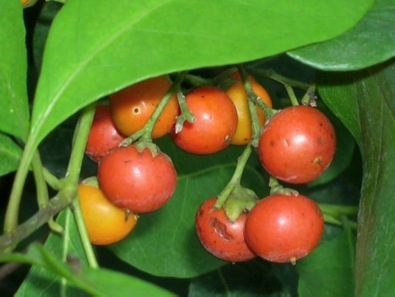Bourreria succulenta: Soapy Fruit and Viagra
Botanists are feisty in their own way. The Strongback is a good example. Is it B. succulenta or B. ovata? One will say “succulenta” is right by international agreement, the other counters “succelenta” is the mere common term and it’s really “ovata.” Add to that about a dozen colloquial names and the teapot tempest steams on.
Strongback is a member of the Borage family and is another of those tropical fruit trees that sits on the cusp of edible non-edible, between forage food and survival food. Is usually found only in southern Florida and the Keys, good to know if you get stranded in the thousands of islands of Cape Sable. Fruit from several species in Bourreria genus are reported as edible. The Strongback is no exception but they taste on the soapy side. A tea can be made from its bark.
The sweet smelling flowers last through the summer and pea-size berries are red by October and persist on the tree. Butterflies and hummingbirds visit the tree as well as fruit-eating birds. Evergreen, as the tree ages its branches droop and remind one of a weeping willow. It is often found growing with other special locals including Marlberry, Wild Coffee, Orange Geiger, Palms and Jamaican Caper.
So why Strongback, not Strongbark? The tree, which is on the endangered species list for Florida, has been rumored for centuries to give men strong backs in the bedroom to do what needs to be done. While there has been no testing in the lab to support this the assertion is still made around the Caribbean (see Herb Blurb below.) Polite folks incorrectly call it Strongbark.
Bourreria (bour-ER-ee-uh) is named for Johann Ambrosius Beurer, an 18th century German apothecary. Succulenta (suk-yoo-LEN-tuh) means fleshy, succulent, and ovata (oh-VAY-tuh) oval in shape.
Green Deane’s “Itemized” Plant Profile
IDENTIFICATION: A shrub or tree to 30 feet, with a buttressed base, narrow crown, reddish brown bark. Leaves alternate, broad ovals to 4.5 inches long, rounded or notched at the time, yellow green, glossy above, pale underneath
TIME OF YEAR: All year
ENVIRONMENT: Hammocks, moist rich soil
METHOD OF PREPARATION: Ripe fruit edible, a tea can be made from the bark.
HERB BLURB
The tree has been used to cure thrush and other oral inflammations, a decoction with rum is considered an aphrodisiac in the Dutch Antilles, and the Bahamas, and Puerto Rico and Haiti and Dominican Republic and the Bahamas and also Cuba. It is often mixed with other trees for medicinal uses. Twigs are boiled with the Tabebuia heterophylla or Citharexylum fruticosum (Five Finger or Fiddlewood) to treat back pain or pain at the waist. It was used to quiet nerves and treat kidneys. A shoot was boiled with Capraria biflora and Turnera ulmifolia (Ram Goat and Ram Goat Dash Along) to treat diarrhea. With Guaiacum sanctum (Lignum Vitae) it was used to treat headache, fever and stiffness in the arms and legs. A decoction with Thouinia discolor and Citharexylum fruticosum (Three Finger and Fiddlewood) was used externally to treat running sores in children. The inner back was seeped with Swietenia mahagoni and Bursera simaruba ( Mahogany and Gumbo Limbo) to treat low blood pressure. An emollient from the inner back was used to treat inflamed joints


